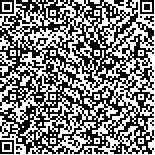| 摘要: |
| 个体建成环境暴露对健康的影响
是健康城市研究领域的关键问题。对于建
成环境暴露的测度方法,近年相关研究多用
GIS数据测度建成环境特征,基于5D理论指
标来衡量建成环境暴露情况,以居住地附近
作为个体全天建成环境暴露的测度范围。现
有方法存在两方面的问题:一是在暴露的测
度指标和测度数据方面,较少关注影像数据
评估所能反映的人本尺度建成环境特征;二
是暴露的测度空间方面,由于较少考虑人的
移动性而存在显著的暴露估计误差。而基于
影像数据的建成环境暴露研究还没有考虑
人的移动性。随着科学技术的发展,建成环
境暴露测度可用的工具方法越来越丰富,呼
吁今后的建成环境暴露研究中,在测度数据上关注可反映人本尺度建成环境品质的影像数据,在测度范围上考虑个体的移动性。提出基于
个体移动性和影像数据的两种建成环境暴露测度方法,一是通过个体时空轨迹叠加街景图片
空间分布底图,二是通过个体佩戴穿戴相机的方法测度建成环境暴露。建成环境暴露测度新方
法的将助力健康城市新理论的探索。 |
| 关键词: 建成环境 暴露 健康 穿戴相机 街景 |
| DOI:10.13791/j.cnki.hsfwest.20210203 |
| 分类号: |
| 基金项目:北京卓越青年科学家计划(JJWZYJH0120191000
3010);国家自然科学基金面上项目(51778319);
国家自然科学基金重点项目(71834005);清华大
学—剑桥大学联合科研基金项目(20193080067) |
|
| Revolution in Approaches of Assessing Exposure to Built Environment: From Static ResidenceBased Approach and GIS Data to Individual Mobility Based Approach and Image Data |
|
Li Wenyue,Long Ying
|
| Abstract: |
| The health impact of individuals’ exposure to built environment is a key issue in the field of
healthy city research. Individuals’ exposure to built environment means someone’s contact with the built
environment, especially with the harmful factors. Accurate assessment of exposure to built environment
is the basis of research on how built environment influences human health. As for the indicators and
data in studies of assessing individuals’ exposure to built environment, indicators from 5D theory like
density, diversity, design, destination accessibility and distance to transition were usually used, and to
measure these indicators, GIS data were usually used. However, in these studies, less attention is paid
to image data that can reflect the human-scale built environment characteristics such as the indicator of
neighborhood physical disorder, which lead to limitation of assessment dimension. As for the assessment
areas and spatial averaging methods in studies of assessing individuals’ exposure to built environment,
most of them take the neighborhood of individuals’ residence as the assessment area for the whole day,
ignoring individuals’ mobility, which can be called the static residence-based approach. But there comes
two problems in this approach, the first is that the region-based attributes could be affected by how the
residential units are geographically delineated, which is called Uncertain Geographic Context Problem;
and the second is that the assessment can be erroneous when people’s mobility is ignored, because
people’s daily mobility may amplify or attenuate the exposures they experienced in their residential
neighborhoods, which is called the Neighborhood Effect Averaging Problem. The consideration of
individuals’ mobility is the common solution to avoid the above problems. Few studies have used the
mobility-based approach to assess individuals’ exposure to built environment, however, these studies
are mainly based on 5D indicators and GIS data. Thus, individual mobility has not been considered in
assessment of exposure to built environment based on image data, which is a combined limitation in
assessment indicator and data, as well as in assessment area and spatial averaging method. With the
development of science and technology, the available tools for assessing exposure to built environment
are becoming more and more abundant. It is suggested that in the future studies of assessing individuals’exposure to built environment, for assessment data, image data that can reflect the human-scale quality of the built environment should be considered, and for
assessment area, individuals’ mobility should be considered. Referring to the assessment of exposure to natural environment, in this article, two assessment
methods of individuals’ exposure to built environment based on image data and individuals’ mobility are proposed. The first one is to assess exposure to built
environment by overlaying individuals’ spatio-temporal trajectories with spatial distribution map of street view images. By auditing the street view images, the
researchers can get the score of human-scale built environment characteristics, then by overlaying the map of built environment characteristics with the map of
individuals’ spatio-temporal trajectories, the researcher can get the time-weighted averaging built environment characteristics that the individual exposed to.
The second one is to invite the individual to wear a wearable camera to record the built environment they exposed to. The wearable camera can take photos at
regular intervals, and by auditing these photos and calculating the results, the researcher can get the time-weighted averaging built characteristics the individual
exposed to. Compared with the two proposed methods, for assessment accuracy, the first one is less accurate because the update frequency of street view images
is not high and the spatial coverage area of them is not complete; while the second one is more accurate because the photos taken by wearable camera can record
the complete and real-time built environment information. For labor and capital cost, the first proposed method has less capital cost and more labor cost. It is
because that the street view images can be freely downloaded but the wearable camera is costly to buy. And although the two proposed methods both have to
audit images, on the basis, the first proposed method has to do more work in overlaying the trajectories. For the above reasons, the two proposed methods are
suitable in different scenarios. The new methods proposed in this article fill the gap that the assessment of individuals’ exposure to built environment seldom
consider the image based human scale built environment characteristics in existing studies, and with the consideration of mobility, the new methods are more
accurate compared with the existing static residence-based assessment approach. The new assessment method of individuals’ exposure to built environment will
help the exploration of the new theory in the field of healthy city research. |
| Key words: Built Environment Exposure Health Wearable Camera Street View |


